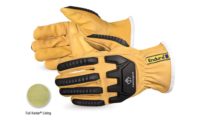We are aware of the shadow which the global diesel vehicle testing affair has cast over the validity of claims based on standards testing in general. So in considering very cheap cut-resistant gloves we may well be led to wonder, “But how could these supposedly hi-tech gloves be so cheap? Are they real or are they fake?”
Having been involved in the PPE glove industry for many years, I believe the truth lies somewhere in between. As a consumable item, cut-resistant gloves sit in a very price competitive marketplace, so it may not be surprising that some tests are done in laboratory conditions optimized to produce the desired results. These results are arguably “to the letter of interpreted text” but often not fully reflective of real-world conditions.
Low-quality options
Take the example of a low-end cut level 3 glove; to achieve CE cut level 3, the tested glove has to score an index of 5 and above (customers can easily see this from the CE test report provided by the manufacturer). If the gloves are made of good quality cut yarn, the cut index should reach an index of 6 and above, while the lower quality one may only go as high as 4.9 or border line 5.
These lower quality gloves have three fundamental problems:
- Some gloves often only have cut-resistant yarn on the palm since manufacturers know that this is where the test sample is taken. This practice leaves the fingers and wrist relatively unprotected and vulnerable in real-world use. Quality gloves, on the other hand, use their cut-resistant cloth over 100 percent of the glove including the cuff.
- Lower quality gloves often do not use any real cut-resistant yarn in their construction. Instead, a so-called strengthened polyester yarn is used. However, the in-service cut-resistance level and the longevity of the glove is substantially compromised, even if it passes the test. Low cost, low performance materials and cheap production processes certainly yield a cheap product. Without significant technological innovation such as spiral wound yarn the result is invariably a poor outcome.
- A light gauge of fiber glass is often used to ensure the cut-resistance level on the test, but the glass fibers frequently then cause skin irritation to the wearer, so they cannot be worn for a practical period such as the duration of a single work shift.
Open to interpretation
Considering the standards themselves, we can look, for example, at the circular knife EN 388 specified tests and see why they are so contentious, and possibly open to interpretive results. Criticisms center around unpredictability of wear on the knife throughout the duration of the test, and the role of abrasion in the materials used in the process, coupled with the method used to attempt to compensate for these inbuilt problems. This makes the EN 388 test unsuitable for gloves including hard material such as glass fiber. This makes it possible to select a material mix and construction which will perform adequately on testing -- but not in the work environment.
The ASTM/ANSI test – similar to the International ISO test - uses a new, sharp blade on each operation; it leaves less to chance. Even so, we still see possible problems of variability. So we can see that claims based on EN 388 can be suspect – if it seems too good to be true, then it probably is. So too we can regard the new ISO13997 cut standard, which in practice we find makes very little difference. Coupled to this we believe that assessment of the test ranges themselves is subjectively so wide as to bring their applicability into question.
Clearly then the difference between a “poor” cut level 5 and a “good” cut level 5 can be substantial. A good quality glove will protect the whole hand and maintain its protective level for a useful working life, dependent on usage and application – sometimes a very long working life through many washes. A lesser quality one may be two-thirds the cost, but only last a few days and the user hopefully will not need to find out how good its protection really is since doing so may well lead to significant injury.
Call for stricter procedures
Testing as a process is excellent in principle and we applaud the test authorities for their efforts in this difficult area – we would only suggest more appropriate tests and stricter procedures with real-world relevance. Consider for example that none of these tests deal with many of the real-world hazards found by PPE glove users worldwide in industries involving operations such as handling of wire or rough wood, or metal and other sharp and pointed items – not even with a typical craft or other knife as it might really be used.
High-quality cut-resistant gloves are made with sophisticated yarn configurations using genuine ultra-high molecular weight polyethylene yarn over the whole glove. Due to the way the yarns are woven and mixed, this type of glove can be washed for multiple times.
This makes perfect economic sense for those who are both safety and cost conscious. All good quality cut gloves are tested constantly; in fact tests should be run on every batch delivered, to make sure the gloves are consistently reaching the right cut level.



